Electric bikes for motorhomes: our ultimate guide
It’s fair to say electric bikes, or e-bikes if you want to use fewer vowels, have become one of the most must-have accessories in motorhomes in recent years
They bridge the gap between using pedal power and travelling around with a car on the back. You may want to stay active, but need help with hills and longer distances, or you may just need this as an option to exploring more around your campsite of choice.
Whatever the reason, the electric bike is a great accessory to pack on board. However, before you rush out and buy, there are a few things to check and the odd measurement or two to take and consider.
- Motorhomes and electric bikes: what you need to know
- Electric bike FAQs
- Your guide to buying an electric bike
- Reviewed: the best e-bikes for motorhomes
- About our magazines
Words by Rachel Scholes and Barry Norris
Motorhomes and electric bikes: what you need to know
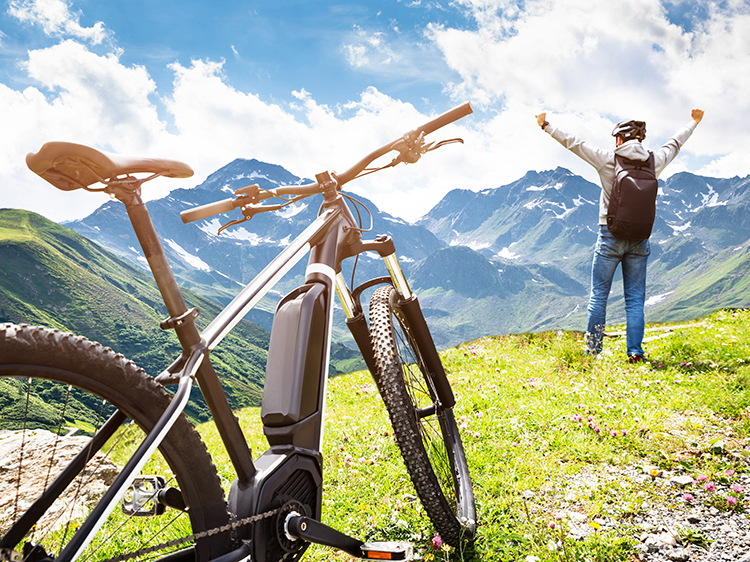
(Photo from Shutterstock)
First of all, the basics: what is an e-bike?
Well, an electric bike – or e-bike for short – looks like a regular bicycle but packs a battery embedded into the frame. You can choose to turn the power on or off and, when turned on, it gives you an extra boost, with some e-bikes able to reach speeds of nearly 30mph.
The important point there, though, is that you do need to pedal – these are not motorbikes and you will still be getting active! For some extra help getting up hills and to make cycling more leisurely, an e-bike is an increasingly popular option.
Electric bike FAQs
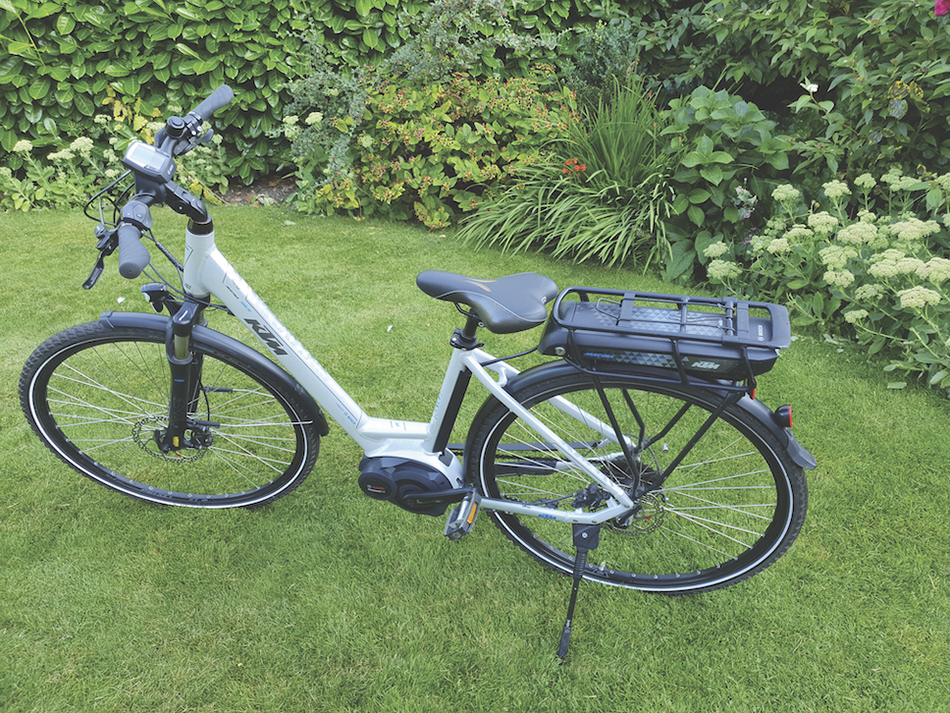
(Photo courtesy of Barry Norris)
These are some of the most common questions when it comes to e-bikes and motorhomes:
Can a motorhome carry electric bikes?
The answer is yes, but it all depends on the motorhome you have and this might define the bike you buy, too. If you have a large storage space under the bed, not only should you measure the height of the space available, you need to be aware of the door size, too.
You may be able to physically store the bike in the space, but if the door requires you to remove wheels, etc, to store, then that’s not particularly useful. A folding or more compact design might be the best option. Also, make sure you have lashing-down points to make sure the bikes are secure.
If the bikes are joining a space filled to the brim with other accessories, it’s worth weighing everything to make sure the e-bikes (and the batteries) don’t take you over your limit for this storage space.
For models without such storage areas, a bike rack is the only option – there are a couple of options here, too, but the key for such accessories is the weight of the bike – electric bikes are generally heavier than normal, even if the battery is removed – those motors and a more substantial frame and fittings are often the cause.
A pedal bike will weigh around 15kg and an e-bike around 25kg. Obviously, these weights can vary widely due to the bike construction and the equipment fitted.
If the rack is mounted on a towbar or chassis extension, check that the weight of the rack and the bikes don’t exceed stated maximums. For example, the Thule Easyfold XT – sold and fitted by LNB Towbars – mounts onto the towbar and has a weight capacity of 60kg, which is more than adequate for an electric bike, though there are plenty of options that do not involve the towbar, too.
If the bikes are on a door-mounted or rear wall rack, make sure you are happy to lift the extra weight of those bikes onto the rack, which is often set higher, although there are racks that lower for ease of acess. All racks also have weight limits so check that, too.
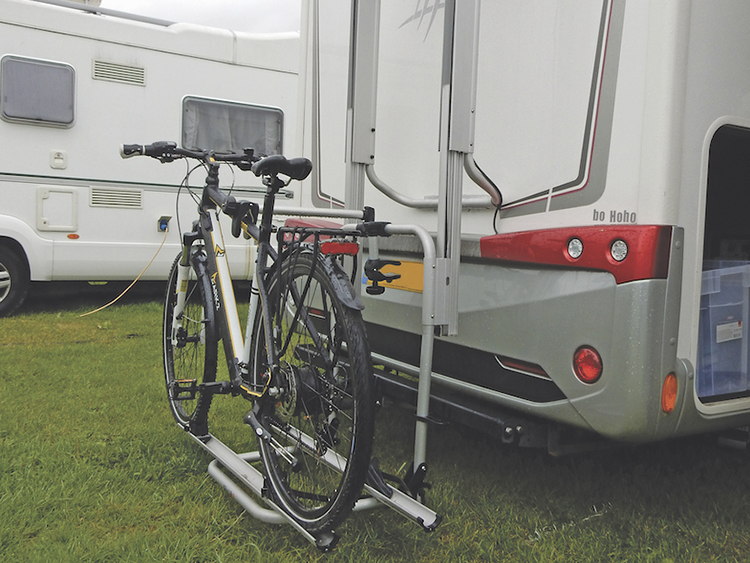
(Photo courtesy of Barry Norris)
Can you charge an electric bike from a motorhome?
Yes, you can, but we’d recommend never leaving the battery unattended while charging.
Lithium-ion batteries are safe if used with caution but, when things go wrong, particularly during charging, they can go spectacularly wrong. Note e-bike lithium-ion batteries are different from the LiFePO4 lithium iron habitation batteries used in motorhomes.
London Fire Brigade recommends the following good practice to reduce the risks of fire when charging lithium batteries:
- Don't block your exit with charging batteries
- Never leave your batteries to charge when you are out or are sleeping
- Make sure your battery and charger meet UK safety standards
- Use the correct charger for your battery and make sure to buy it from a reputable seller
- Let your battery cool before charging it
- Unplug your charger once the battery has charged
- Fit smoke alarms in the area where you charge your batteries
Look out for signs of heat, bulging, smells or noise, smoke or a lack of performance; all can indicate a failing battery that could be a fire hazard.
If you mainly use campsites and plug into the hook-up bollard to get 230V power, then charging your e-bike batteries will not pose any problems. If, however, you like to wild camp or use smaller sites without mains or facilities, then you’ll need to give significant thought to power.
An inverter will be needed at the least, along with high-capacity batteries, solar and B2B chargers. As one motorhomer found out, retrofitting such a system to a motorhome or campervan can be tricky, not impossible, but the set-up will vary from one model to another as electrical systems are very complicated these days.
Your guide to buying an electric bike
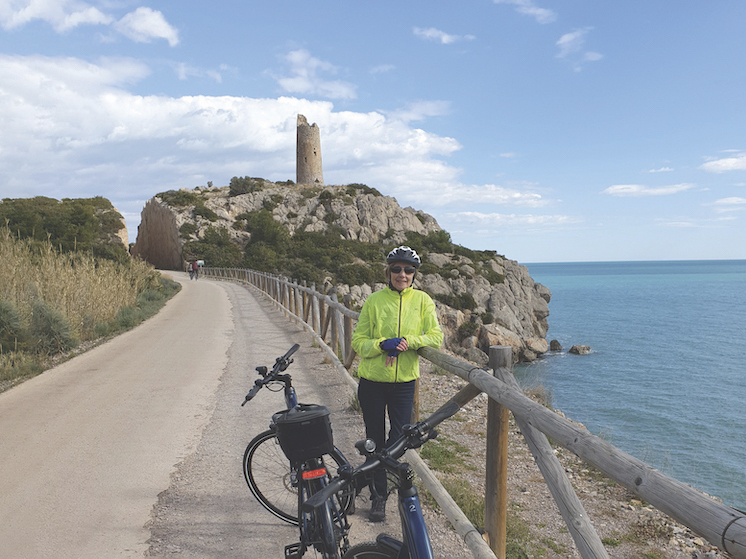
(Photo courtesy of Barry Norris)
If you're thinking about buying an e-bike for using with a motorhome, you're far from alone – they're becoming very popular and more versions are popping up all the time. These are the things you need to watch out for to get the best deal!
E-bike motors
There are two main types of battery related to their location. Crank motors tend to offer a higher torque than hub motors and the low-down position provides a low centre of gravity for the bike. Hub motors are usually located on the rear wheel because most of the rider’s weight is here, thus giving better traction than with a hub motor fitted to the front wheel.
Bikes with motors giving high levels of torque, say, over 65Nm, may feel powerful, but some riders could be more comfortable with a lower torque for a smoother ride. Whilst hub motors tend to have less torque, they can have a similar power output and can be lighter and more affordable than crank motors.
E-bike batteries
Batteries come in internal and external forms. Internal (or integrated) batteries will be located inside the bike frame and may be removable or not for charging. It’s often more convenient to charge a battery off the bike and it can be helpful to be able to remove the battery when travelling if you’re close to the bike carrier weight limit.
Battery capacity indicates how much power a battery can hold measured in Watt hours (Wh). The higher the Wh figure, the longer the battery will run before exhaustion and hence the greater the range.
The weight of an e-bike battery is a substantial part of the weight increase over a similar pedal bike, hence a lighter bike may have a 250Wh-rated battery, and a heavier bike with greater range has 500Wh.
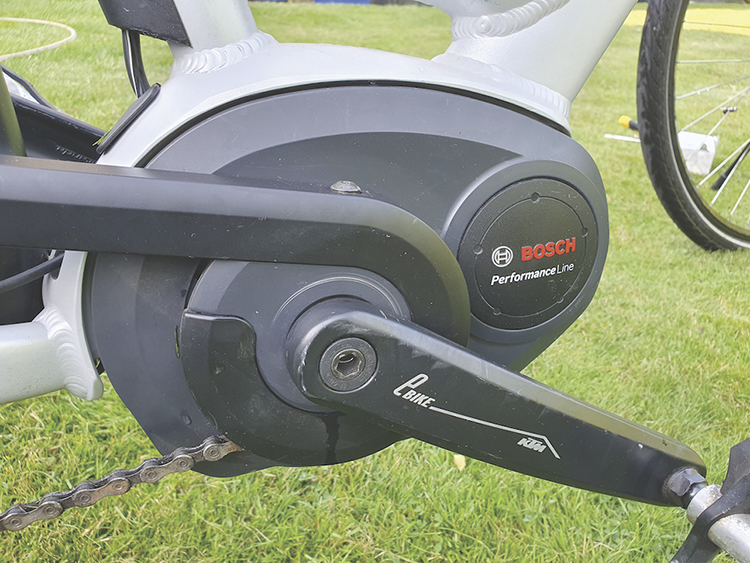
(Photo courtesy of Barry Norris)
E-bike brakes
Because e-bikes are heavier than pedal cycles and capable of faster speeds, they need powerful brakes, hence many are fitted with hydraulic disc brakes, which are very effective. They do have the disadvantage of not being as easy to maintain than conventional cable brakes.
E-bike gears
Most bikes will offer derailleur gears, but hub gears are also available. As with anything, you get what you pay for. So, even with the derailleur brand leader, Shimano, there are different levels of gear systems to choose from.
Hub or internal gear hub systems have some advantages, such as less maintenance and being less vulnerable to physical damage. They are also capable of permitting changing of gear when stationary, which is useful for those riders who tend to stop at junctions in too high a gear.
E-bike suspension
Front suspension forks are now largely the norm for many bikes, but they do mean more weight. So, unless you regularly ride on rough tracks, this is something you can do without if weight is critical. Rear suspension is found less frequently and sensitivity to uneven tracks can be overcome to some extent by a suspension seat post.
E-bike tyres and wheels
Tyres come in a variety of tread patterns designed for specific terrain and wheel sizes. Tyres made for city roads tend to be smoother and narrower than off-road tyres to provide for less rolling resistance, whereas tyres intended for trails are usually wider and have a more prominent tread pattern for better traction.
For many motorhomers, a hybrid bike will be ideal – a bike suited to roads but also gravel tracks, but not necessarily having the sturdiness (or weight) of a mountain bike.
If you’re going to ride off-road, even on the likes of disused railway tracks, you will be better off going for the larger size of wheels, which are more able to cope with moderate potholes and unevenness.
However, if a compact or fold-up bike is your priority then your choice is likely to be limited to a small-wheeled bike. E-Go’s smallest folder, for example, has 16in wheels, while its biggest models come with 20in wheels. However, of interest to those who want to off-road but want a folding model for storage purposes, is the E-Go Max+, with fatter 4in tyres and the 500Wh motor.
Reviewed: the best e-bikes for motorhomes
To help you make an informed purchase, we've picked out the best e-bikes around right now, from folding bikes to electric options for off-road trails.
Trend TNT 5 Pro
.jpeg)
(Photo courtesy of Trend E-bikes)
The key to success with folding bikes is dimensions and wheel diameter. You want as big a wheel as possible, but when folded the bike needs to fit into the smallest parcel possible.
This model from Trend E-bikes strikes a great compromise, with 20in wheels, yet being very compact when folded. It weighs in at 23kg, offering a 250W motor and a 22 to 28-mile range. The battery is built into the crossbar of the frame, but can be removed for charging or loading.
The folding action is very neat, while there are LED lights front and rear, along with a gel saddle for those looking for a slightly longer ride.
Buy it here: Trend TNT 5 Pro: from £995
AS Bikes Electrotricycle
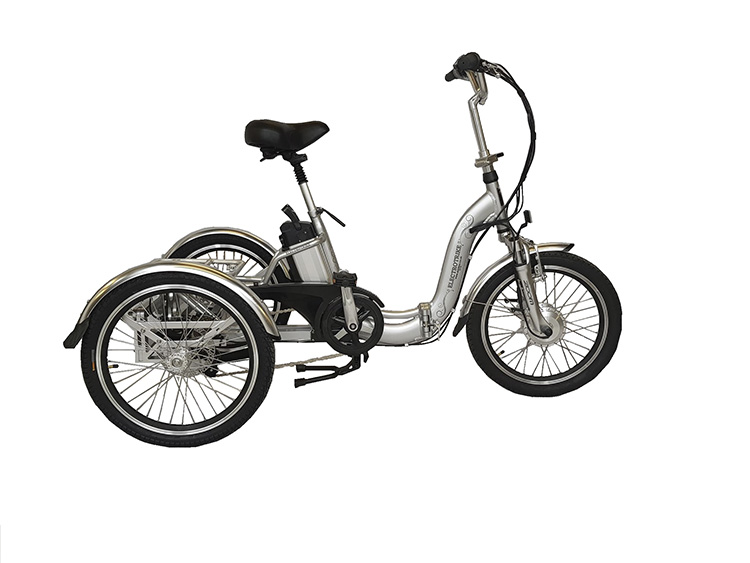
(Photo courtesy of AS Bikes)
A unique addition to the electric bikes market, this Electrotricycle from AS Bikes is the only fully folding electric tricycle in the UK.
Why would you want an e-trike over an e-bike? Well, beyond personal preference, the extra wheel creates a much more stable ride while still allowing you to enjoy all the benefits of electric assistance. In fact, the Electrotrike features a 36V battery that gives you around 30 miles of riding on a full charge, travelling at speeds of up to 15mph.
This e-trike is easy to fold down, compact enough to fit into a motorhome and, perhaps most importantly, comes with a no-quibbles warranty from AS Bikes, which has been attending Warners Shows for over 20 years and offers a repair service for owners of its bikes at every show.
Buy it here: AS Bikes Electrotricycle: £2,495
Mark2 X-Cross 520
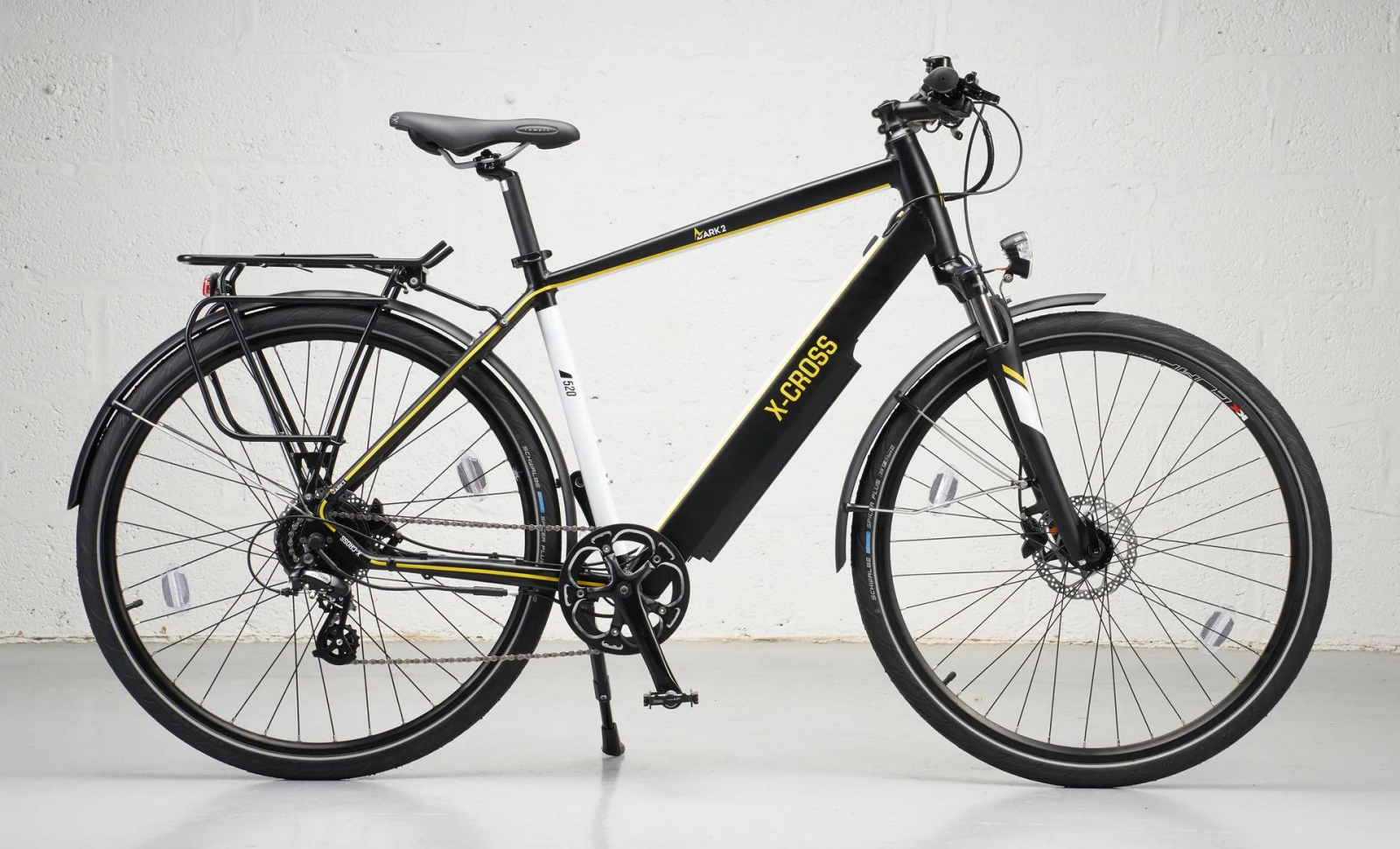
(Photo courtesy of Mark2)
Hybrid bikes will suit most motorhomers unless you plan to tackle the 7stanes, being suitable around town as well as general touring.
The 28in tyres make less of the miles you want to travel, while the 375Wh battery can be removed for charging. The bike actually weighs 19.7kg without that battery on board; meaning that loading on and off a highish rack will be possible for most. That battery provides 22-50 miles of range depending on how much power assistance you choose.
If you want a more comfy saddle, bigger battery, different tyres, there are plenty of options to choose from, although these will push up that price.
Buy it here: Mark2 X-Cross 520: £1,999
Tenways CGO600Pro
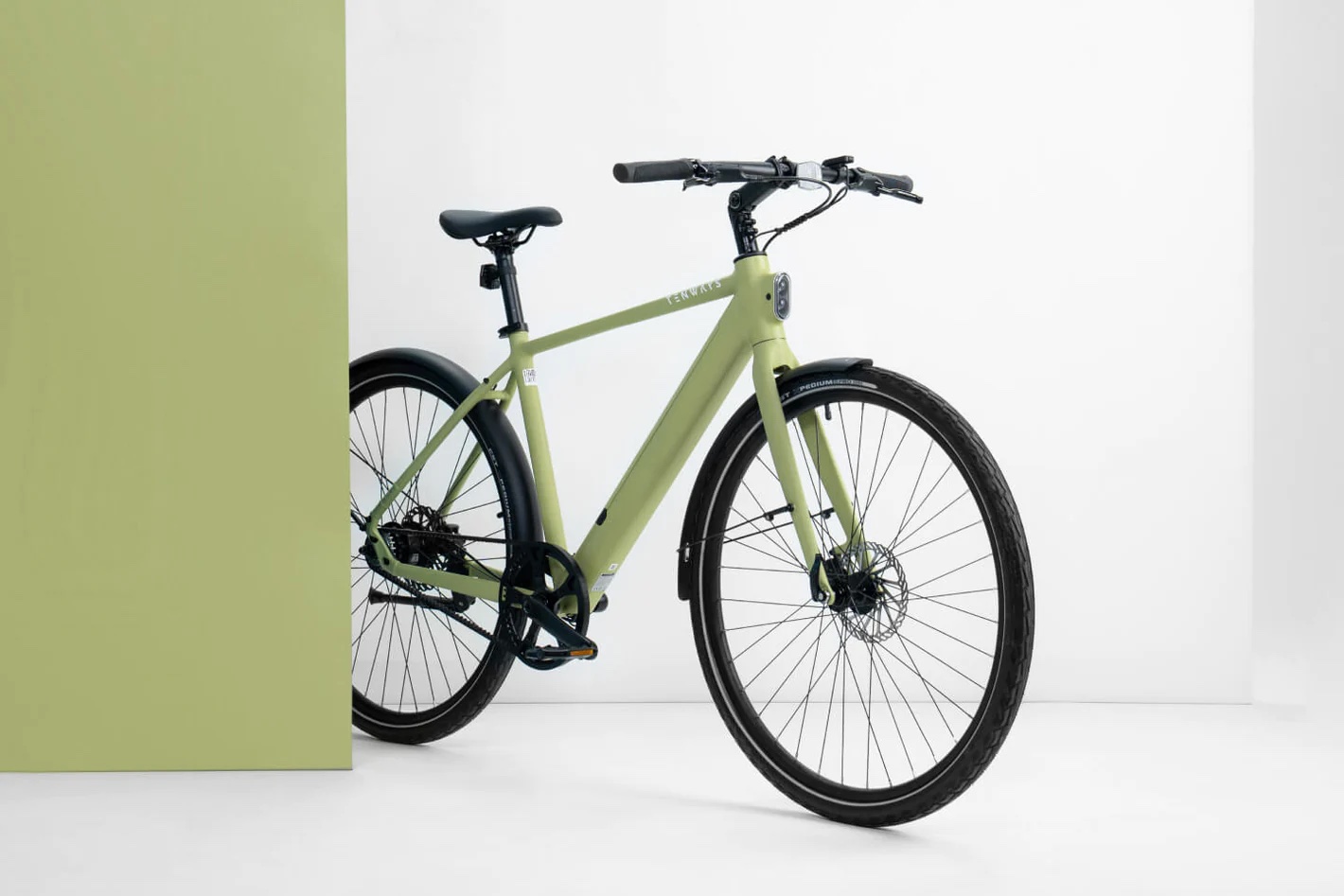
(Photo courtesy of Tenways)
While you may have thought that truly lightweight e-bikes would be very hard to come by or very expensive, we've found a brand that might be able to change your mind.
That's because this CGO600Pro from Tenways only weighs 18kg including the battery, which is removable. So if you have to lift it high onto a rack, or have a weight limit on the bike rack, it's worth a look at this e-bike option for your motorhome adventures.
The price tag? From £1,799.99, which put its firm in the mid priced e-bike segment. That gets you integrated front lights, simple easy-to-read display, app connectivity and a battery that offers up to 62 miles on a charge. You can extend this too, with a 180Wh add-on battery option.
Buy it here: Tenways CGO600Pro: From £1,799.99
Specialized Turbo Levo
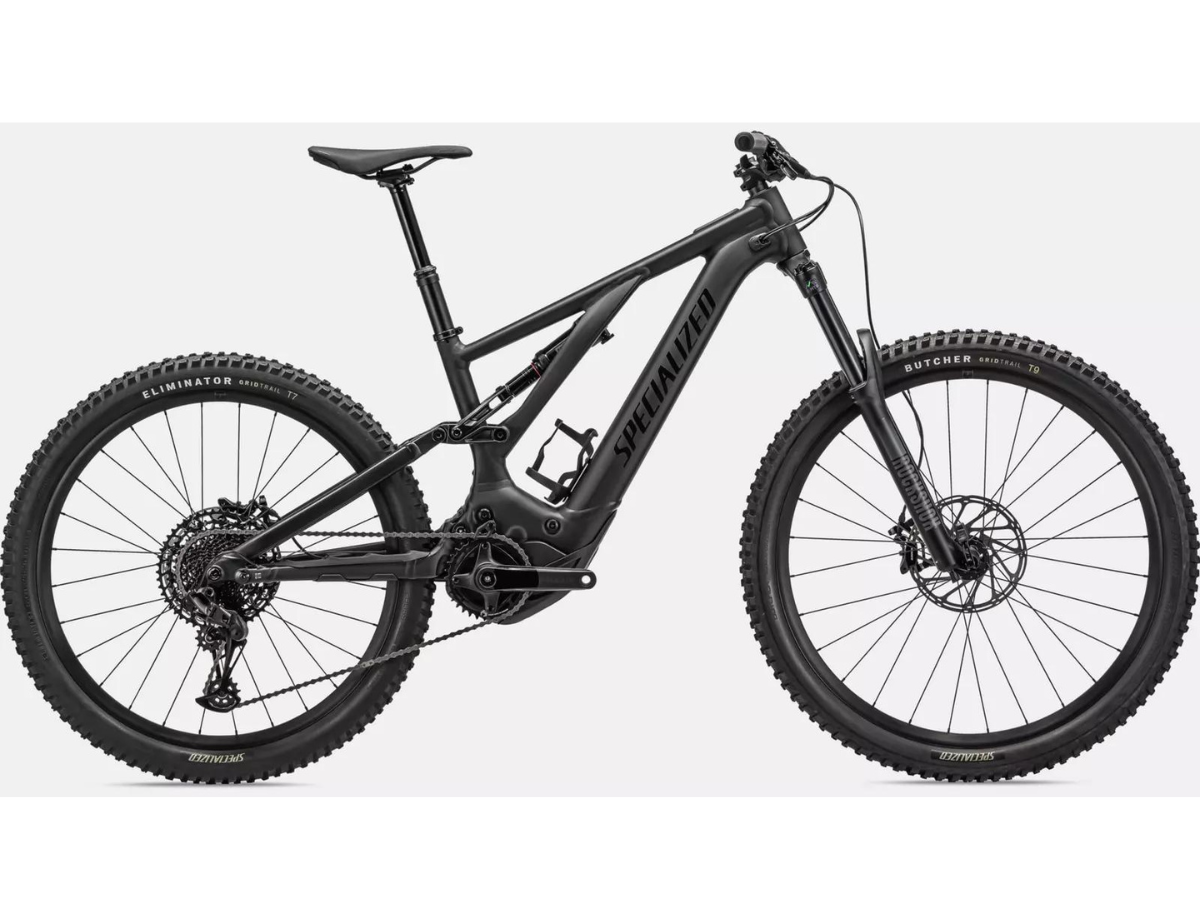
(Photo courtesy of Specialized)
This is built for off-road riding and throwing yourself down a mountain or navigating a twisty, obstacle-laden forest track demands a different kind of bike. Everything needs to be that bit more solid and sturdy.
Specialized has put together this bike weighing in at 23.81kg (for the S4 size; they range from S1 to S6, that’s heights between 4ft 11in and 6ft 8in). This is the alloy version but the company also makes carbon versions at various price points.
This one, however, comes with a 700Wh integrated battery – this system with a turbo unit built in offers up to 90Nm torque and 565W of power for up to five hours. This bike also has mixed wheel sizes (27.5in back and 29in front), that offers a more ‘nimble ride’.
Buy it here: Specialized Turbo Levo: £4,900
Pendleton Somerby
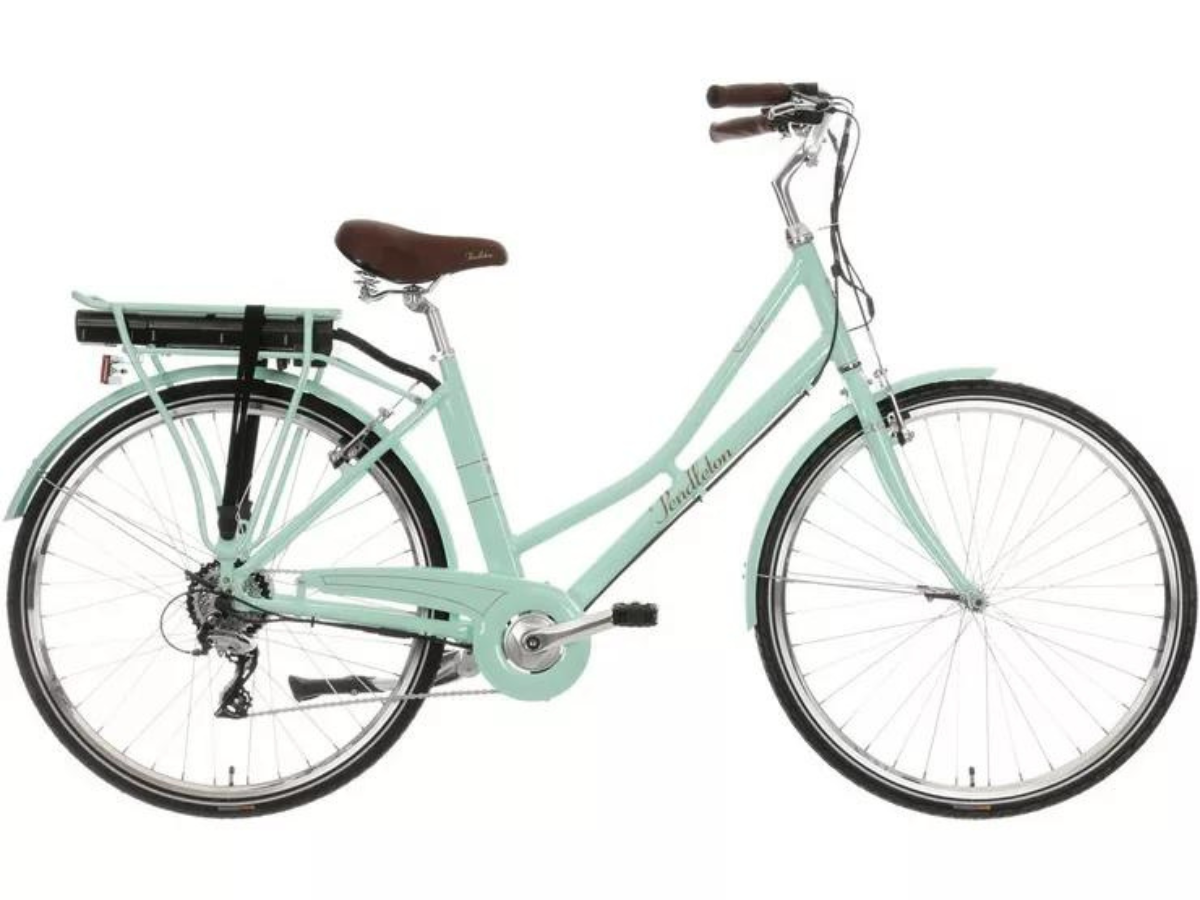
(Photo courtesy of Pendleton)
If you’re more of a Marple than a Mark Cavendish, the previously featured e-bikes may be a total anathema to your idea of a two-wheeled accessory for your motorhome. That’s why the current e-bike revolution is a pretty great thing: there’s something to suit everyone.
That includes this classic shopper-style bike from Pendleton. The battery (317Wh) has a range of around 25-30 miles (the company claims a maximum of 50 miles, depending on the level of assistance, weight of rider, wind, etc).
It’s a 250W motor and that all-important weight is around 22kg, which isn’t bad. Plus, you can get a basket for the front as an option, which would complete the fifties look. Colours are currently white. mint or dark blue.
Buy it here: Pendleton Somerby: from £1,099
Elysium Relay
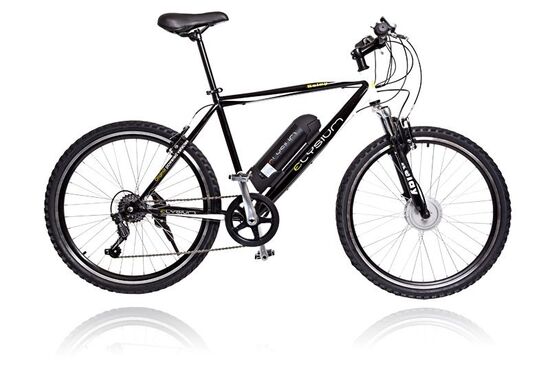
(Photo courtesy of Elysium)
If you don’t want to spend the earth, but also don’t want to trawl online marketplaces looking for secondhand deals, there are some budget e-bikes out there, like this Elysium Relay. It’s a mountain bike with 26in wheels and you can choose between two battery sizes (9Ah/16Ah).
The weight is 23kg (for the 19in frame) and battery range is about 25 miles, with the usual caveats.
Buy it here: Elysium Relay: from £799
Wisper 806
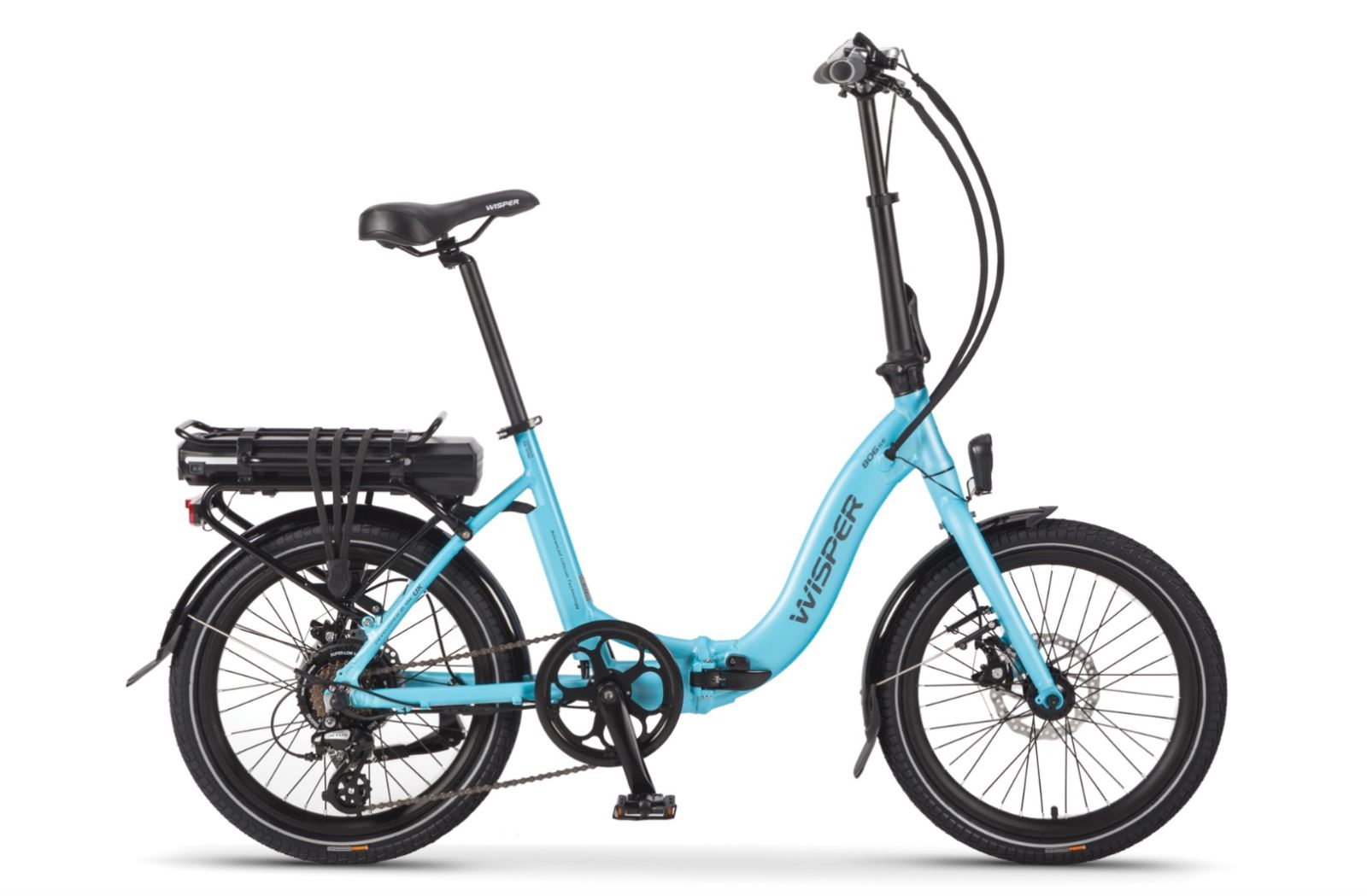
(Photo courtesy of Wisper)
Another folding bike, this one from Wisper has several options to tailor it to your needs. A 375Wh battery has a max range of 50 miles, while the 575Wh version will carry you up to 75 miles and the 700Wh battery stretches this to a quoted 90 miles.
Obviously, the bigger the battery the heavier it will be, adding 1.5kg to the 21kg figure for the bike with the smallest battery. While 20in wheels and the 250W motor are other key figures, what’s also good is the battery location. It sits on a rear rack that can also be used to carry up to 25kg.
You can also choose the method of power delivery (cadence sensor or torque power pack) and a full throttle option instead of the standard pedal assistance.
Prices for the Wisper 806 start at £1,499, rising up to £2,598.
Buy it here: Wisper 806: from £1,499
Wisper Tailwind Trail
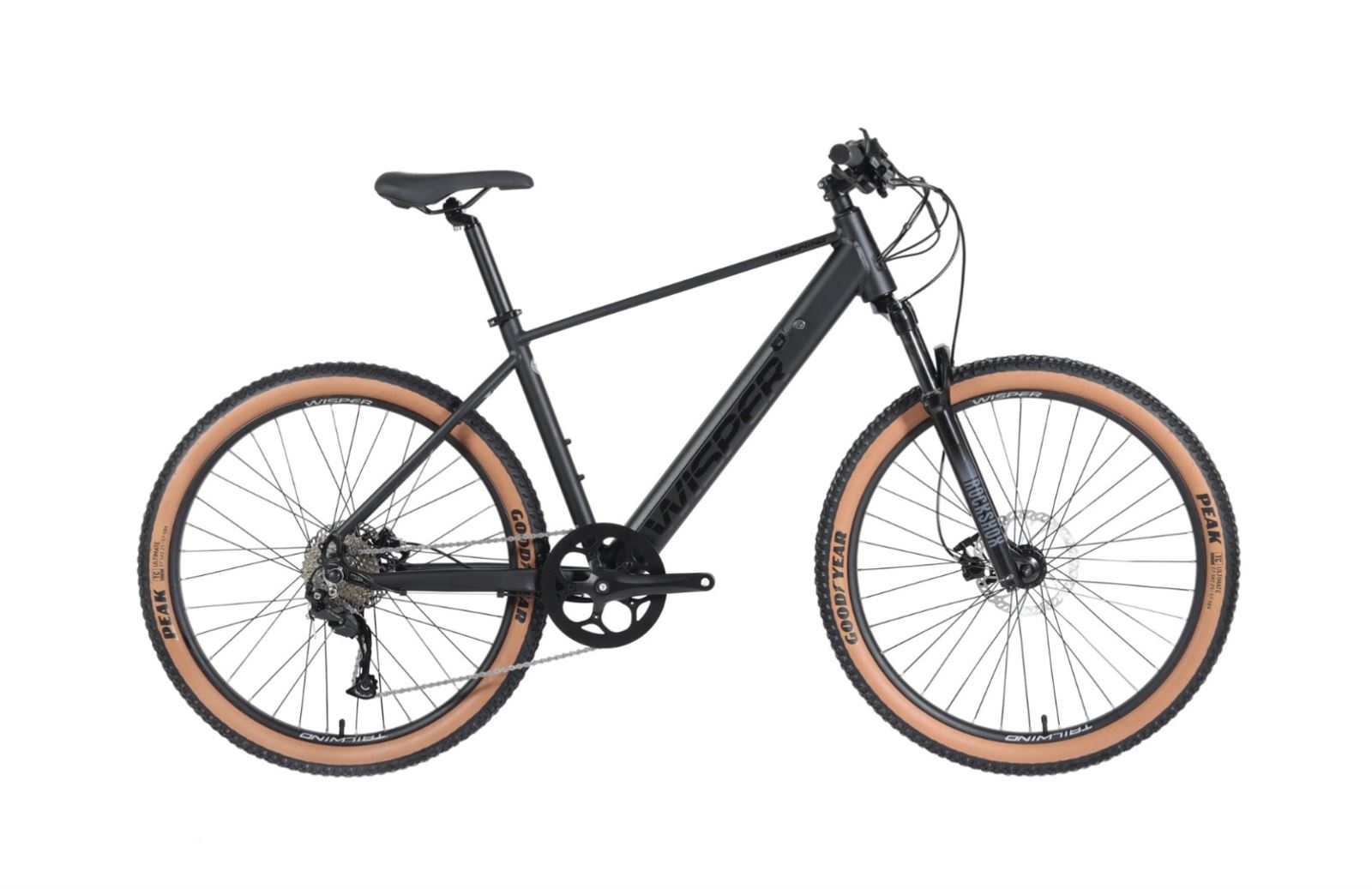
(Photo courtesy of Wisper)
Wisper continues the flexibility with its full-sized bike range, the Tailwind, There are several modeis available with a traditional crossbar and a lower version as well as three specification levels. Pick the basic City model for about town riding, the mid-range Comfort with features like a pannier, and the Trail which is more suited to off-road adventures.
Then, for each, you can also choose between two battery sizes and two colours.
The standard version (with 360Wh battery) weighs 19kg and can go up to 50 miles on a standard charge, while the larger 540Wh battery adds a kilo and 20 miles to the range.
Prices start at £1,799 for the City Crossbar, rising to £2,549 for the Trail.
Buy it here: Wisper Tailwind Trail: from £1,799
Expert motorhome advice to your door!
Why not subscribe to one of our fabulous magazines and get expert advice, travel ideas, technical help and all the latest news for your motorhome and your motorhome adventures!

Want to know more about MMM magazine?
Every month MMM has articles written by motorhomers who have been there and done it, from great UK and European (and further afield) tours, campsite reviews, owners' reports and DIY projects among other things.
MMM's tests, reviews and expert buying guides are not to be missed. MMM's technical advice is a must and includes everything from weekend jobs to longer-term DIY projects. And much more!
About MMM magazine
Want to know more about What Motorhome magazine?
Every issue of What Motorhome magazine provides essential buying advice for anyone looking to buy a new motorhome or campervan or upgrade their existing model. With a pedigree of over 30 years of offering the best motorhome and campervan buying advice, every issue of What Motorhome includes more new motorhome and campervan reviews than you will find in any other magazine.
About What Motorhome
Want to know more about Campervan magazine?
Campervan is the exciting monthly magazine that will give you all the inspiration you need to explore the world in your campervan. Every issue is packed with real-life campervanning experiences, inspiring travel ideas in the UK and further afield, the best campsites to stay on, campervan road tests and reviews of the latest models, and much more!
About Campervan magazine








Recent Updates
Engine management lights: all you need to know
What is the engine management light? What does it mean, and what do I have to do? ...
Motorhome air suspension: all you need to know
Motorhomes are heavy and the additional weight of equipment and height of the bodywork can increase the loads ...
Motorhome WiFi: how to get better motorhome internet
Staying connected on the move is more and more essential, so relying on campsite WiFi isn't an option – here ...
A class of their own - our guide to A-class motorhomes
Thinking of trading up to an A-class, or even going straight to the top of the motorhome tree? We guide you ...
Explore overseas on a motorhome dream tour
Enjoy exotic travel in a campervan or motorhome by hiring, swapping with someone else or exporting your ...
Motorhome water systems: everything you need to know
On-board water is an important part of every motorhome – here’s everything you need to know ...
Campervanning in Europe: what you need to know
Whether you're planning a leisurely drive through the French countryside, navigating bustling city streets in ...
Campervan security: all you need to know
With thefts on the increase, it’s important to know how to keep your campervan secure and prevent campervan ...
Campervan furniture: everything you need to know
Our campervan experts guide you through all the essentials for your campervan, including tables, chairs, ...
Campervan finance: how to fund your purchase
Here we look at the different types of campervan finance available, to help you decide what’s the best option ...
Other Articles
Britain’s best used motorhomes
Want a great motorhome without paying the premium for a new one? Here's a guide to the best you can get in the pre-owned market for each layout, ...
Which motorhome? Choosing the perfect motorhome for you
Choosing a motorhome or campervan is one of the biggest buying decisions you’ll ever make, so it's important ...
Campervan washroom essentials: stay fresh on the road
Our guide will take you through the campervan washroom essentials you'll need so you're well-prepared for ...
Dogs in campervans: all you need to know
Follow our advice and your dog will enjoy campervanning as much as you do ...
Electric campervans: all you need to know
Our guide will take you through everything you need to know about electric campervans and what the future ...
Motorhome electrics: a complete guide to your motorhome electrical set-up
Motorhome electrics can dramatically enhance the convenience and comfort of your vehicle – but they can be ...
Lighting for campervans: all you need to know
We guide you through all the lighting options available for you and your campervan, including interior ...
Our guide to 'cheap' motorhomes in 2024
If you're on the hunt for an affordable new motorhome, this is the best place to start – we've rounded up a ...
Campervans in winter: all you need to know
Here's your guide to preparing your campervan for the colder months, whether you will be using it or putting ...
Six alternative campervans to the VW California
Looking for a different option to Volkswagen’s famous Cali? Here are some of the best other campervans out ...